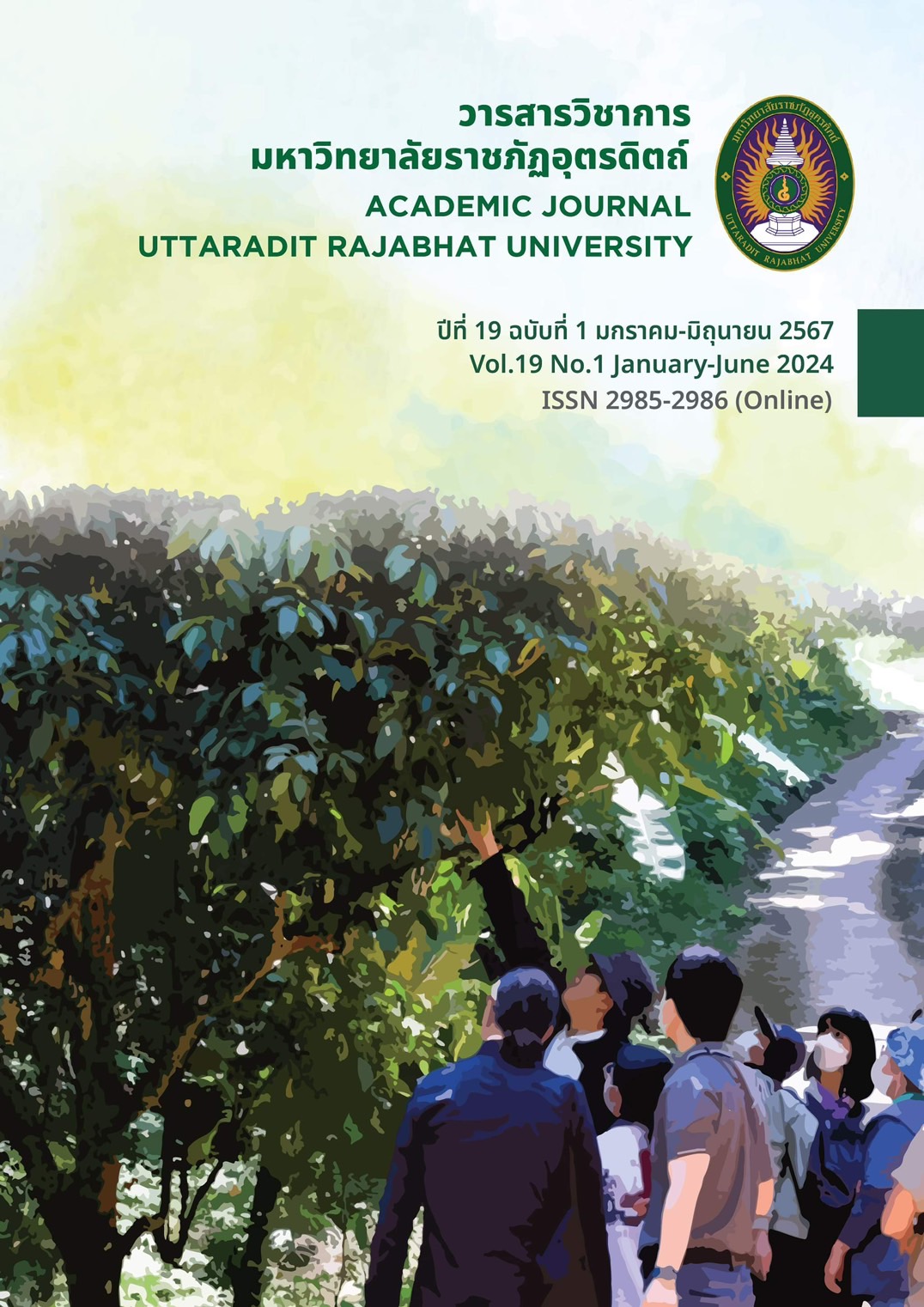THE PRODUCT DEVELOPMENT OF TAMARIND CHILI PASTE WITH DRIED SHRIMP FOR COMMERCIAL USE OF KOH SI CHANG IN CHONBURI PROVINCE
Main Article Content
Abstract
The objectives of this research were to develop a tamarind chili paste with dried shrimp and to investigate chemical, physical, microbiological and sensory quality of the tamarind chili paste with dried shrimp of Koh Si Chang in Chonburi Province. The mixture design was applied in this study to develop the tamarind chili paste with dried shrimp formulation based on three factors; immature tamarind pod, coconut sugar, and shrimp paste. The qualities of tamarind chili paste with dried shrimp products were analyzed for the chemical, physical, microbial and sensory evaluation aspects (hedonic scale 9-point). The samples (n = 120) were selected from consumers which consumed tamarind chili paste by used convenient sampling random. The overall acceptance and purchase intent (A binomial (yes/no) scale) were also evaluated. The results showed that the most accepted community product by consumers is the recipe 3 (immature tamarind pod: dried shrimp: coconut sugar: shrimp paste: salt: shallots: garlic: capsicum annuum as 50.87: 8.00: 11.40: 4.78: 0.75: 12.25: 9.80: 2.15 by weight). The overall liking score of tamarind chili paste with dried shrimp product in recipe 3 was over 7.00 (on a 9-point scale) within positive acceptance (91.67%) and purchase intent (91.67%). The physical qualities of tamarind chili paste with dried shrimp products consisting of L*, a*, b*, water activity (aw) and pH were 23.47, 16.49, 22.62, 0.57, and 5.50, respectively. The moisture content, ash, protein, lipid, carbohydrate and fiber of tamarind chili paste with dried shrimp products were 33.72, 5.10, 12.63, 2.73, 16.83, and 4.37, respectively. The microbiology quality of the chili paste followed the Thai Community Product Standard (Number 321). Outputs from this research showed the potential to add value to tamarind (the local ingredient of Koh Si Chang in Chonburi Province), and increase the income for the population in the area of Koh Si Chang in Chonburi Province.
Downloads
Article Details

This work is licensed under a Creative Commons Attribution-NonCommercial-NoDerivatives 4.0 International License.
References
กนกวรรณ ปุณณะตระกูล, ยศพร พลายโถ, และอัจจิมา มั่นทน. (2559). การพัฒนาผลิตภัณฑ์น้ำพริกแห้งจาก เม็ดบัว. วารสารวิจัยและพัฒนา วไลยอลงกรณ์ ในพระบรมราชูปถัมภ์ สาขาวิทยาศาสตร์และเทคโนโลยี, 11(1), 109-117.
จุไรรัตน์ เกิดดอนแฝก. (2552). สมุนไพรลดความดันโลหิตสูง 121 ชนิด. เซเว่น พริ้นติ้ง.
ถกลรัตน์ ทักษิมา, ปณิธี สุวรรณอมรเลิศ, และปิยะพงษ์ ยงเพชร. (2566). การพัฒนาผลิตภัณฑ์ปลาดุกแดดเดียวของวิสาหกิจชุมชนโดยใช้ตู้อบพลังงานแสงอาทิตย์ “รุ่นหลังเต่า”. วารสารวิชาการ มหาวิทยาลัยราชภัฏอุตรดิตถ์, 18(2), 39-52.
ปารมี ชุมศรี. (2559). การพัฒนาสูตรผลิตภัณฑ์น้ำพริกมะขามเสริมปลาดุกร้า. สมาคมสถาบันอุดมศึกษาเอกชนแห่งประเทศไทย ในพระราชูปถัมภ์สมเด็จพระเทพรัตนราชสุดาฯ สยามบรมราชกุมารี, 5(2), 48-55.
ผกาวดี ภู่จันทร์, โสรัจวรชุม อินเกต, ไพรวัลย์ ประมัย, และสุสิตรา สิงโสม. (2563). การพัฒนาผลิตภัณฑ์น้ำพริกผัดสมุนไพร. วารสารวิจัยรำไพพรรณนี, 14(1), 131-138.
สันติสุข โสภณสิริ และวีรพงษ์ เกรียงสินยศ. (2558). รสเด็ด เผ็ดร้อนเลิศคุณค่า ยาและอาหารไทย. อุษาการพิมพ์.
สำนักงานมาตรฐานผลิตภัณฑ์อุตสาหกรรม. (2566). มาตรฐานผลิตภัณฑ์ชุมชน. (มผช.321/2566) น้ำพริกผัด. กระทรวงอุตสาหกรรม. https://tcps.tisi.go.th/pub/tcps321_66(น้ำพริกผัด).pdf
สุภางค์ เรืองฉาย. (2552). การพัฒนาน้ำพริกมะขามผสมกระเจี๊ยบ. วารสารวิชาการ มหาวิทยาลัยหอการค้าไทย, 29(4), 88-101.
สุมณฑา วัฒนสินธุ์. (2545). จุลชีววิทยาทางอาหาร. พิมพ์มหาวิทยาลัยธรรมศาสตร์.
อภิญญา มานะโรจน์, ปรัศนี ทับใบแย้ม, วาสนา ขวยเขิน, และบุญยนุช ภู่ระหงษ์, (2562). การใช้ลูกหนามแดงทดแทนมะขามอ่อนบางส่วนในผลิตภัณฑ์น้ำพริกมะขาม. วารสารวิชาการและวิจัย มทร.พระนคร, 13(1), 139-148.
Association of Official Analytical Chemists. (1998). Bacteriological analytical manual (BAM). (8th ed.). United States Food and Drug Administration.
Association of Official Analytical Chemists. (2000). Official method of analysis of AOAC international. (17th ed.). Gaithersburg, Maryland.
Tumpa, B. D., Sondhi, R., Akter, N., & Alim, M. A. (2021). Biochemical, sensory and storage ability assessment of different tamarind drink formulations. Fundamental and Applied Agriculture, 6(2), 163-171.
Walker, J., Boeneke, C. A., Sriwattana, S., Herrera-Corredor, J. A., & Prinyawiwatkul, W. (2010). Consumer acceptance and purchase intent of a novel low-fat sugar-faee sherbet containing soy protein. Journal of Food Quality, 33(s1), 27-41. https://doi.org/10.1111/j.1745-4557.2010.00300.x

